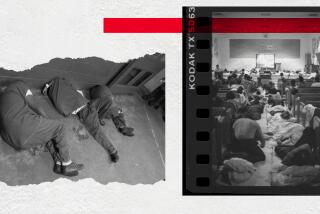Guards Supply Drugs to Prisoners
- Share via
* In 1984 I published a book, “The Joint: Language and Culture in a Maximum Security Prison,” based on interviews with inmates at the Washington State Penitentiary, the maximum security facility at Walla Walla. They told me that one of the easiest ways to get drugs was to bribe corrupt guards, yet your Aug. 25 article, “Prisons Are a Hotbed of Drug Use, Survey Finds,” devotes only a couple of sentences to the important role guards play in perpetuating drug use in prisons.
The data for my book were collected between 1979-1980, so this problem has existed for a number of decades, probably dating from the 1960s. I have done fieldwork in nine maximum security facilities across the country and found the same rampant drug problem aided and abetted by corrupt guards in each.
INEZ CARDOZO-FREEMAN
Palm Springs
*
I was an officer for the California Department of Corrections and at the time tried to discover why there weren’t drug-sniffing dogs at the main check-in for both visitors and staff. I was told that dogs “scared” the visitors.
Most visitors would welcome the addition of dogs but not the correctional officers. Why is that? Drugs in quantity are not coming in with visitors because of the Body Scan 2000 and cameras in the visiting rooms. Packages and mail are very thoroughly searched. But they are still coming inside. Who is bringing them in? Officers? Free staff? Vendors? Though most officers and free staff are honest and not party to this, there are enough who are to make drugs readily available to prisoners. Officers/free staff must open handbags, briefcases, lunch boxes, etc., so the front entrance officer can look into them, but they aren’t searched or scanned. So, please explain to me, why the lack of dogs? Where is the public outcry requiring them?
LANIE VANNATTER
Shingle Springs, Calif.
More to Read
Sign up for The Wild
We’ll help you find the best places to hike, bike and run, as well as the perfect silent spots for meditation and yoga.
You may occasionally receive promotional content from the Los Angeles Times.






